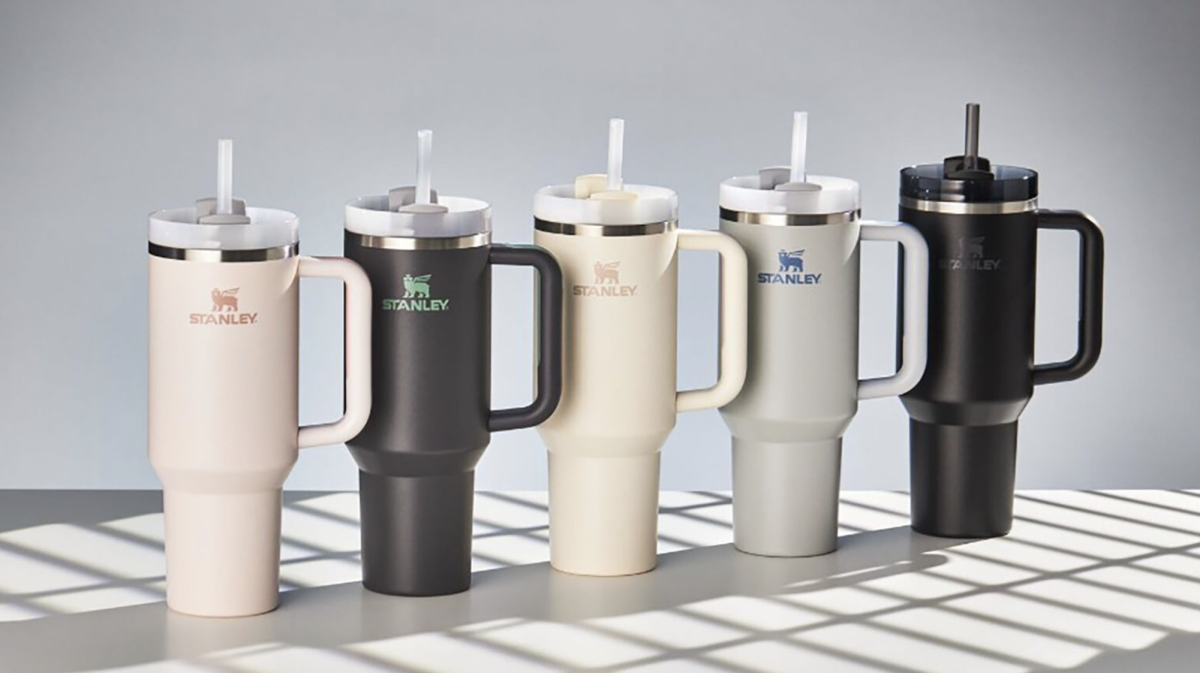Stanley tumblers have become a popular hydration accessory among Westminster students due to their attractive colors and ability to keep water cool for long periods of time. These tumblers, made with recycled stainless steel and sealed with vacuum insulation technology, have gained immense popularity through social media platforms like Instagram and TikTok. However, recent concerns regarding their lead content have raised questions about their safety, and members of the Westminster community should be made aware of the potential risks associated with their use.
Stanley has been in business for 110 years, but their tumblers only gained sudden fame in 2017 when popular influencers Linley Hutchinson, Ashley LeSueur, and Taylor Cannon went viral with their “Buy Guide” featuring the Stanley 40 oz. Quencher. When Stanley decided to discontinue selling it, the women took to social media and turned the tumbler into the high-demand item it is today.
Dean of student life Kamille Harless attributes the rise in popularity of these tumblers to the trend culture in America.
“I think they’ve been popularized in America, and they seem like the hottest trend to follow,” said Harless. She added that students often like to be part of the latest trends to fit in and that Stanley tumblers have become one of the latest items to latch onto.
Social media markets the Stanley up toward Millennial and Gen Z audiences, portraying the cup as both a necessity and a luxury item. Priced at around $45, it is more expensive than similar products, but it taps into the fear of missing out and creates a sense of exclusivity and lifestyle representation.
Sophomores Lila Hagen and Nidhi Pandya have been raving about their Stanley tumblers lately. According to them, not only do the tumblers have an eye-catching design, but they also come with incentives that motivate them to stay hydrated and drink more water.
Saidah Jones, assistant coach for varsity track and field at Westminster, agrees that Stanley tumblers encourage students to drink more water effectively.
“They have cute designs with a handle, they’re aesthetically pleasing with all these adorable colors, they have a straw that provides easy access to water, and for this reason, I see more people using them,” said Jones. “More importantly, I see more students using them, which is great!”
While the Stanley tumbler is famous for its aesthetics and functionality, some students and faculty have raised concerns about its practicality and leakage.
“I am usually on the go, and I need a water bottle that I can throw in my bag, and, sometimes even literally run with,” said Jones. “However, you can’t do this with a Stanley tumbler, so I see fewer student-athletes using it and more students. Despite being functional and cute, its lack of mobility detracts from its practicality.”
Hagen suggested caution regarding the Stanley tumblers’ leakage, as it is a big flaw with the tumblers. To combat this issue, Stanley cup owners can purchase “spill stoppers” to reduce water leakage.
Despite their widespread use and sustainable practices, there have been recent concerns that Stanley tumblers may contain lead. However, Stanley has clarified that they use “an industry standard pellet” containing lead to seal the vacuum insulation. The area is covered with “a durable stainless steel layer” and is inaccessible once the cup is sealed. Therefore, Stanley says its tumblers are safe to drink from. In the rare event that the cover on the bottom of the tumbler comes off and exposes the pellet, there may be a risk of lead exposure. In such cases, users can submit a claim through the company’s lifetime warranty.
Many of Westminster’s students and faculty were unaware of the truth behind the rumors of lead in Stanley cups.
“I’ve seen the headlines, but I haven’t had time to sit down and actually read the articles,” said Harless. “I think there’s a lot of products out there that may contain trace amounts of lead that they don’t think is dangerous, but I’m not sure if that’s the case with the Stanley tumblers.”
“I didn’t know that Stanley cups were rumored to contain lead,” said Pandya. “This makes me nervous to drink from mine, because I remember learning about lead poisoning in eighth grade.”
As trends continue to fluctuate, making informed decisions when choosing a water bottle is essential to ensure one’s safety and well-being.
Edited by Andrew Su




